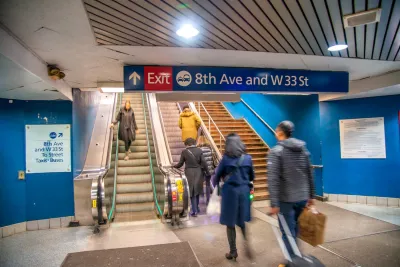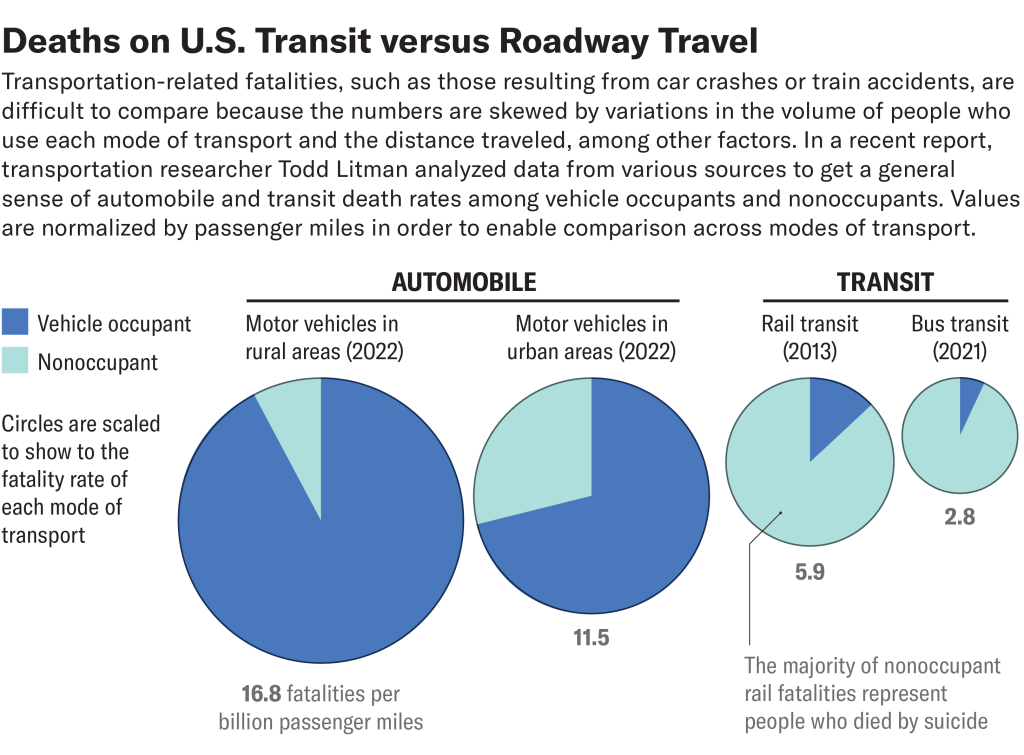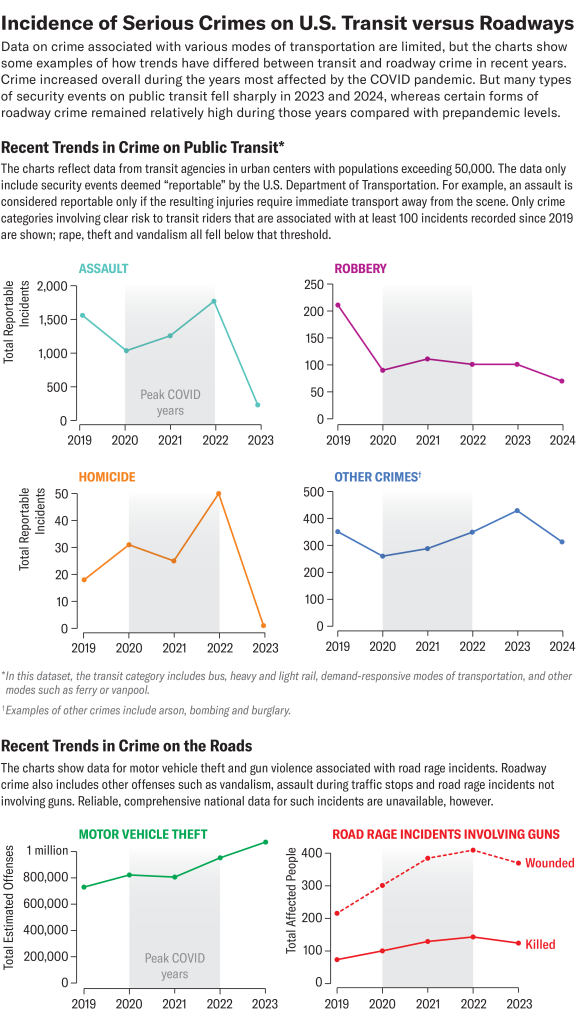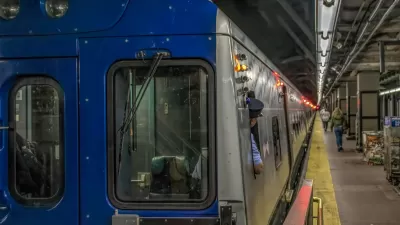Contrary to popular assumptions, public transportation has far lower crash and crime rates than automobile travel. For safer communities, improve and encourage transit travel.

A new Scientific American article shows the much lower crash and crime rates of public transit travel compared with driving. “According to the data, driving a car in the U.S. is far more dangerous than taking public transit—in terms of crash risk and crime.”

“Public transit travel requires people to travel with strangers in a confined space, and especially in large cities with very diverse populations, it’s easy to feel intimidated by that experience,” says Todd Litman, founder and executive director of the Victoria Transport Policy Institute in British Columbia, who has published numerous studies on public transit safety. “Just from an experiential perspective, it feels unsafe, especially to people who don’t do it frequently.” Litman calls this dread: fearing a risk despite it having a low probability.
According to Litman, the risk of death or injury on public transit is about one tenth that of car travel. “And neighborhoods oriented more around public transit have about one fifth the overall traffic deaths per capita of car-oriented neighborhoods.”

FULL STORY: These Charts Explain Why Public Transit Is Safer Than Driving

Alabama: Trump Terminates Settlements for Black Communities Harmed By Raw Sewage
Trump deemed the landmark civil rights agreement “illegal DEI and environmental justice policy.”

Planetizen Federal Action Tracker
A weekly monitor of how Trump’s orders and actions are impacting planners and planning in America.

The 120 Year Old Tiny Home Villages That Sheltered San Francisco’s Earthquake Refugees
More than a century ago, San Francisco mobilized to house thousands of residents displaced by the 1906 earthquake. Could their strategy offer a model for the present?

In Both Crashes and Crime, Public Transportation is Far Safer than Driving
Contrary to popular assumptions, public transportation has far lower crash and crime rates than automobile travel. For safer communities, improve and encourage transit travel.

Report: Zoning Reforms Should Complement Nashville’s Ambitious Transit Plan
Without reform, restrictive zoning codes will limit the impact of the city’s planned transit expansion and could exclude some of the residents who depend on transit the most.

Judge Orders Release of Frozen IRA, IIJA Funding
The decision is a victory for environmental groups who charged that freezing funds for critical infrastructure and disaster response programs caused “real and irreparable harm” to communities.
Urban Design for Planners 1: Software Tools
This six-course series explores essential urban design concepts using open source software and equips planners with the tools they need to participate fully in the urban design process.
Planning for Universal Design
Learn the tools for implementing Universal Design in planning regulations.
Clanton & Associates, Inc.
Jessamine County Fiscal Court
Institute for Housing and Urban Development Studies (IHS)
City of Grandview
Harvard GSD Executive Education
Toledo-Lucas County Plan Commissions
Salt Lake City
NYU Wagner Graduate School of Public Service





























